Believe it or not, there is a secret rome , full of little-known places and incredible corners little frequented by tourists. Ready to discover it?
1.THE SECRET OBELISK OF THE VILLA CELIMONTANA
It has thirteen obelisks Rome like seven are its hills, and each one presides over a height or a symbolic square for the city. They have them the summit of the Quirinal, the slopes of the Pincio, and the Navona, Popolo and Rotonda squares, embellishing the immortal presence of the Pantheon, in addition to many others that surprise the traveler when he finds them on his walks.
On celio hill there is, contrary to custom, an obelisk that is hidden from the rest. As mystical as the temples and monasteries that populate an area of Rome that has always been dedicated to sacred trades, it is reached using the oldest street in the city, the Clivus Scauri, whose layout belongs to the years of the Caesars.
Its worn pavement will lead us to the door of a hidden park, the Villa Celimontana . Dotted with Romans fleeing the heat and tourists who find it by chance, Villa Celimontana hides in its entrails the Mattei Obelisk, built in the time of Ramses II, and taken to Rome as a souvenir by some imperial consul.
The place may seem austere and remote, inappropriate for a monument accustomed to presiding over renowned squares instead of being surrounded by trees and brush. What is he doing there then? According to the Romans, the Obelisk Mattei commemorates a beauty typical of Villa Celimontana, a unique and precious feature in its bustling city: here you can enjoy the song of the birds.
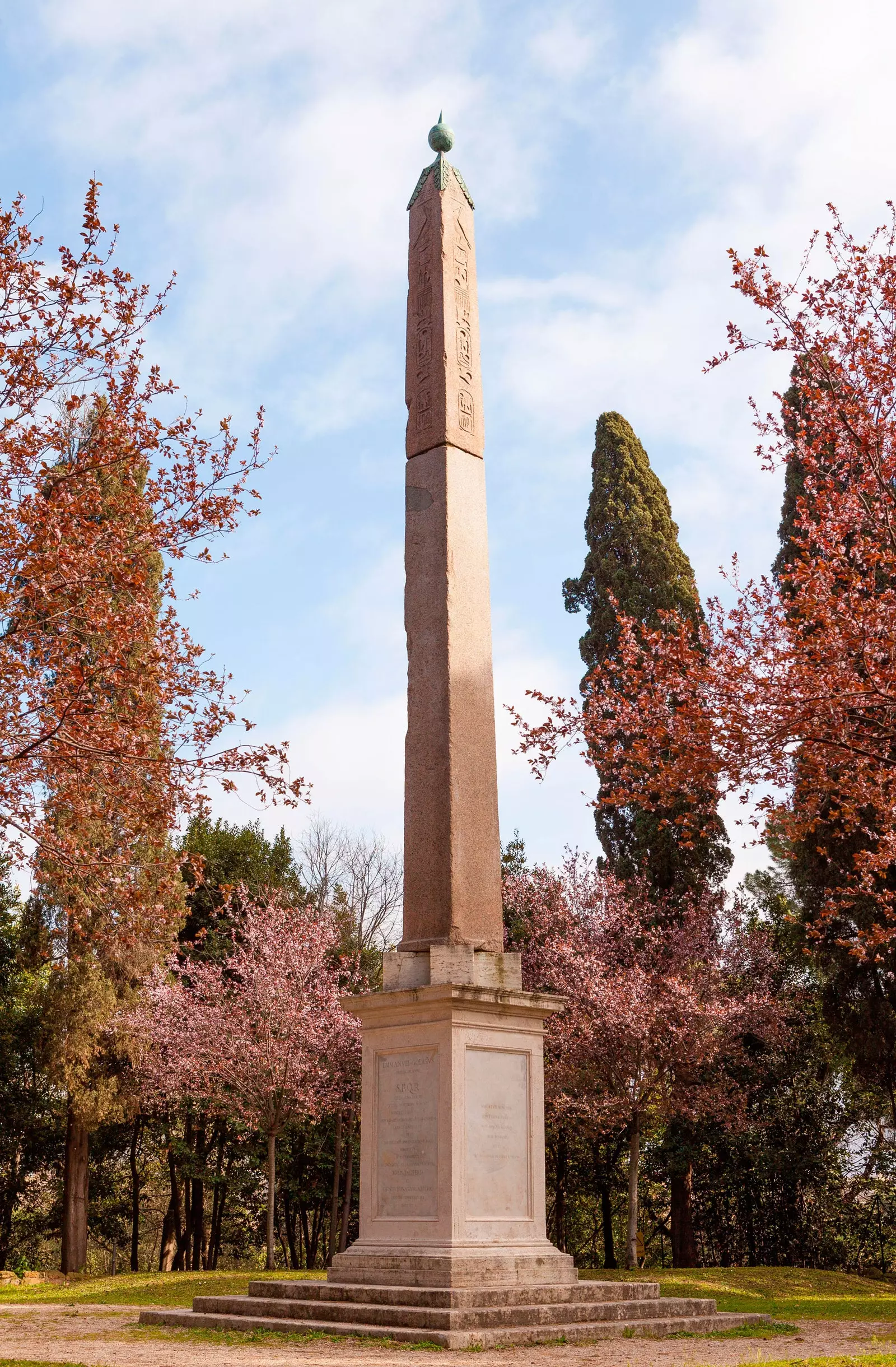
Obelisk Mattei, in the Villa Celimontana (Rome).
2. THE ARCH OF GALIENUS
If Celio and his secret obelisk commemorate silence, the Esquiline Hill, where the Arch of Gallienus stands, it is its noisy and overwhelming antithesis, the heart of a Rome that beats between horns and exhaust pipes.
Around Santa Maria Maggiore, one of the oldest basilicas in the city, to the Plaza de Victor Emmanuel, the different ethnic neighborhoods of the city are distributed. There are numerous Asian, African and Eastern European communities who inhabit the Esquiline and turn it into a neighborhood with a pulse very different from the “touristized” districts closest to the Tiber.
In the midst of the bustle, between languages never before heard by the ancient Romans, a triumphal arch erected by Augustus it seems to be the only thing belonging to the most clearly classical Rome. Next to the arch of Gallienus, stone by stone, stand a church and a mosque camouflaged in the form of a house. Under the arch, the present of Rome is understood, a city that lives from the past, but whose present is very different.
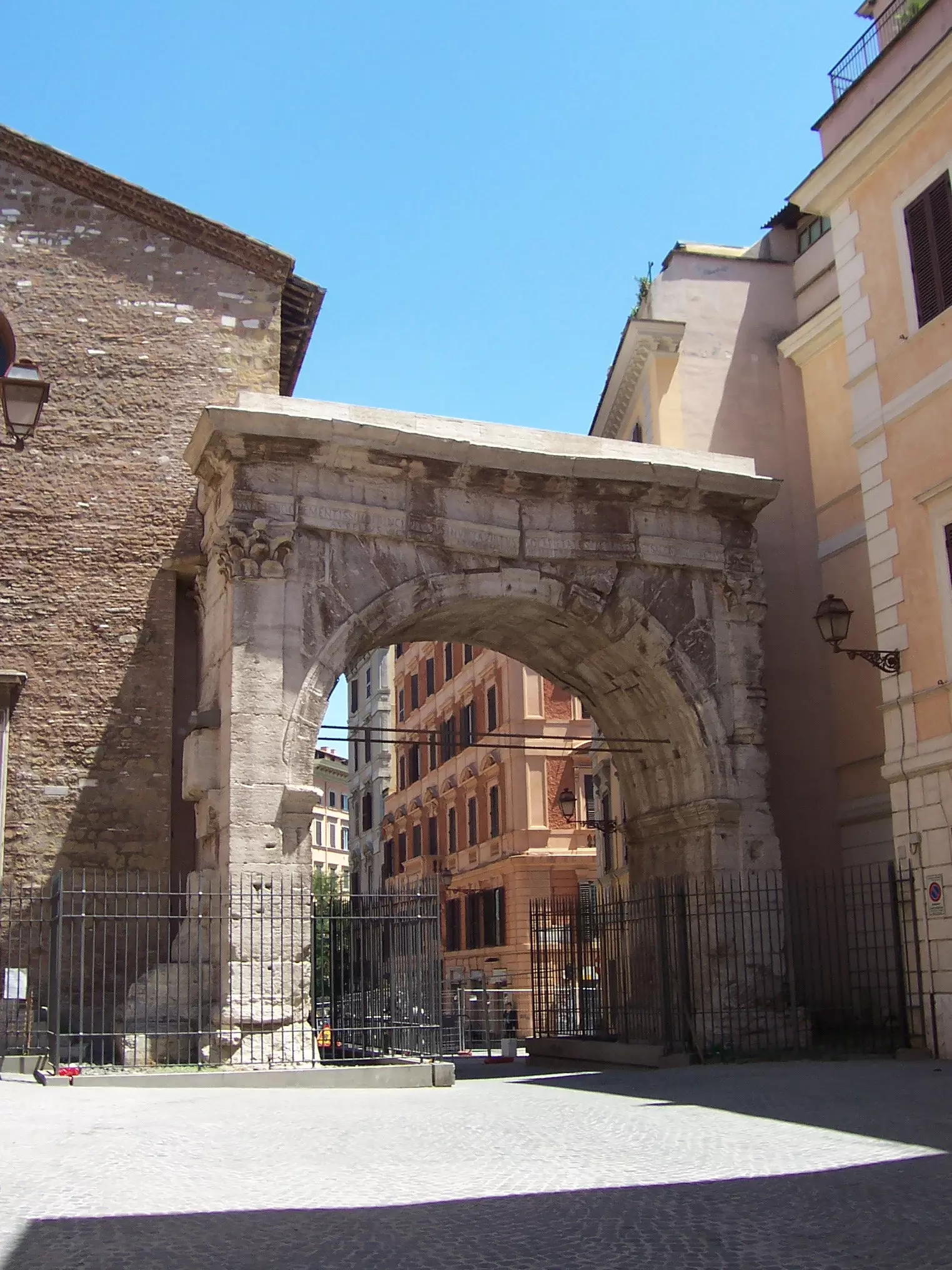
Arch of Gallienus (Rome).
3. FOUR CROWNED SAINTS: THE WAY OF THE COLOSSEUM
An ancient street like Rome itself, under whose layout they have been found remains of a via imperial which remains during the Middle Ages and to this day, descends from the basilica of Saint John Lateran until touching the arches of the Colosseum. It's small and narrow, and it runs parallel to the former nova street of San Juan de Letran, hidden behind buildings, terraces and churches.
The via dei Ss. Quattro, in Italian, takes its name from the monastery that presides over it and watches over the neighboring Vine Hill. It is worth entering a building whose history begins as roman House, in the possession of senators who convert it into a church. The medieval paintings that are preserved inside will dispel any prejudice about the obscurantism of the time, guarded by nuns who will receive the visitor with a smile.
But the spectacle of via SS. Quattro is reserved for Colosseum, which begins to appear as soon as we pass the monastery, at the end of the street, embedded in pastel and matte buildings. His figure enlarges as he advances, and when least expected, one appears before the most famous arena in history. It is the perfect arrival before such a monument, much better than the tourist metro stops and via dei Fiori Imperiali.
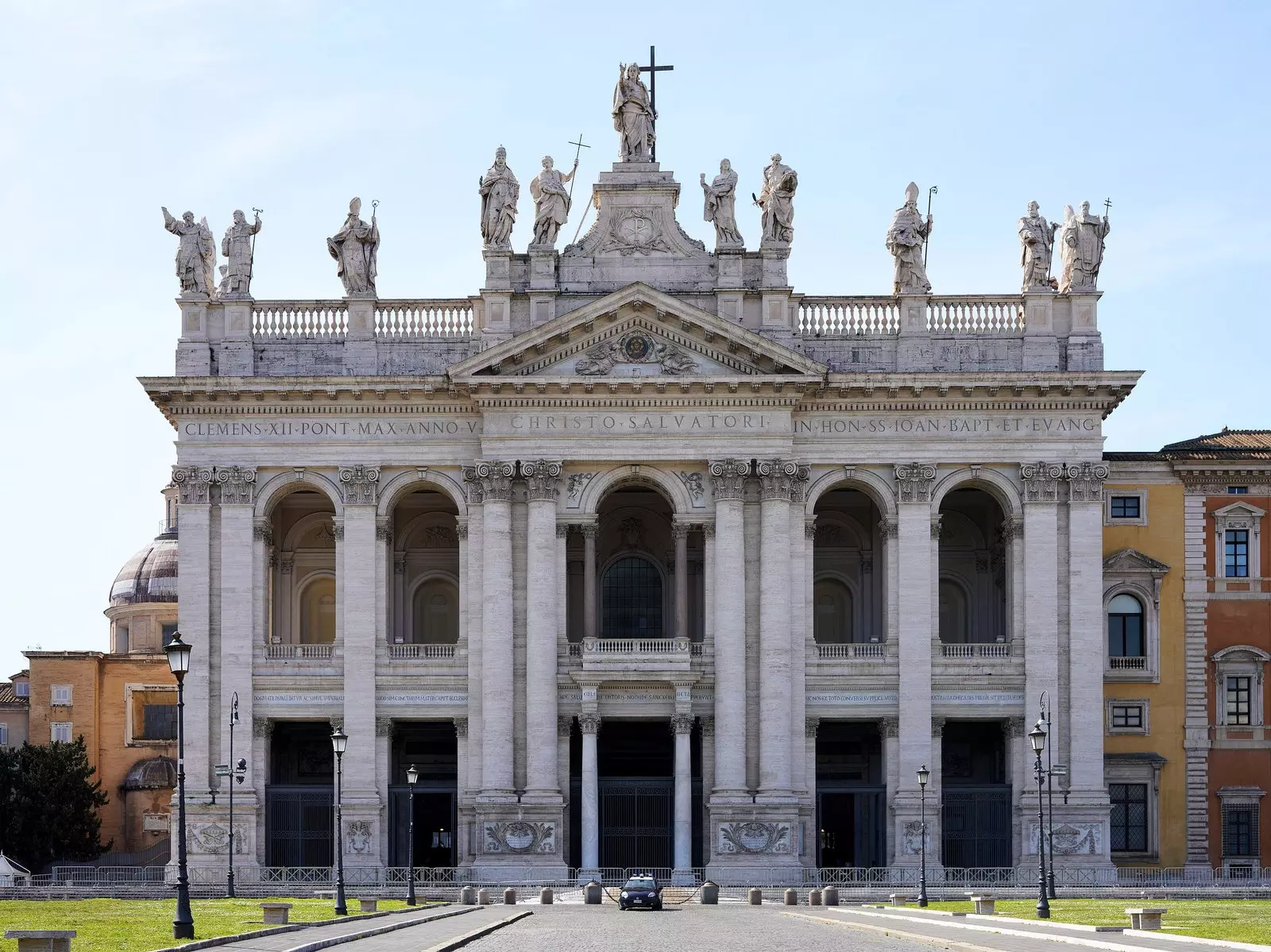
Archbasilica of Saint John Lateran (Rome).
4. THE HIDDEN FACE OF TRASTEVERE: PORTA PORTESE
the river Trastevere It is well known among those who visit Rome, both for its iconic places, such as the church of Santa Maria in Trastevere, or the beautiful viewpoint that overlooks the city next to the Academy of Spain. This route, which begins in the square Trilussa, crosses the busiest streets of Trastevere, and climbs towards the Gianicolo through a via crucis, it is a popular way to get to know the only neighborhood in the urban center where you can still breathe the authentic Roman aroma.
However, the southeast side of Trastevere, the one facing the Aventine, is much less well known. Its character is markedly merchant, since in this area the river port of Ripa, a flourishing emporium during Roman and medieval times. From those years there remain the houses that overlook the Piazza dei Mercanti, presided over by the basilica of Saint Cecilia. If you are art lovers, one of the best kept secrets in Rome is the medieval frescoes that decorate the counterfacade of the temple, the work of Pietro Cavallini, and whose realistic expressions and away from the Byzantine rigidity notably influenced the famous Giotto.
From the Basilica of Santa Cecilia you can hear the cries of the vendors who offer their merchandise in the most famous of the Roman markets: the Porta Portese. The offer of exotic items, antiques, clothing from all periods and uses, in addition to a good catalog of urban art, becomes overwhelming, since the market it stretches for more than a kilometer following the Tiber. This is how shopping centers in ancient Rome should have turned out: a bustling place where shopkeepers offer at street level, and at the top of their voices, all kinds of products to haggle for them. And if you are hungry in the face of so many offers, stop by I go to Trastevere, a trattoria traditional with pizzas worthy of presiding over the Capitol Hill.
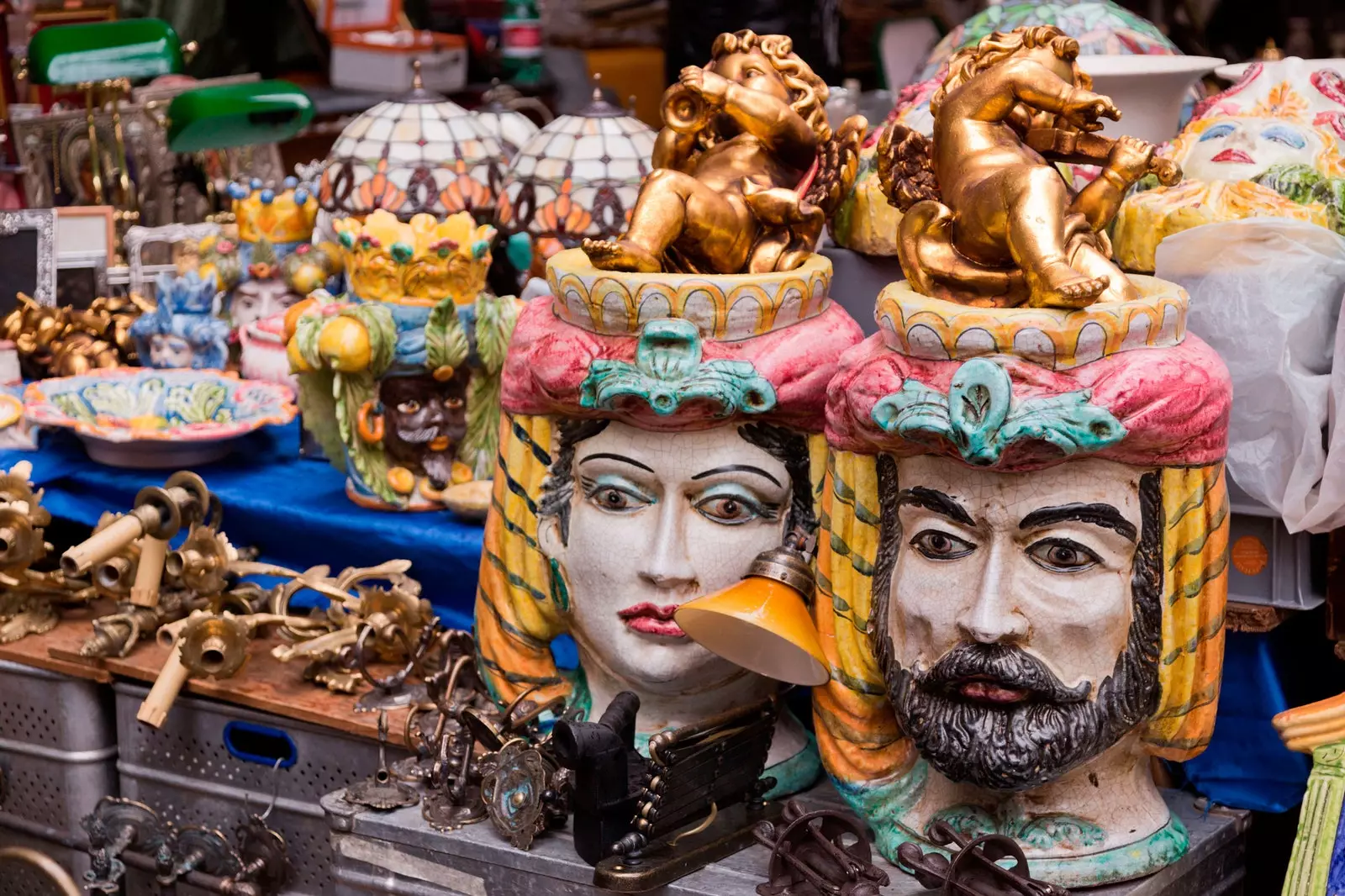
Ceramic pieces at the Porta Portese flea market (Rome).
5. CAFFARELLA PARK
The outskirts of Rome suppose an open-air museum of the uncontrolled growth experienced by the great European cities after the trauma of World War II had passed. Rome, a city of clerics whose quarters had barely outgrown its ribbon of walls, suddenly began to need more and more space, and the neighborhoods occupied the countryside that until then the Romans had despised. There was only nomadic herders who traveled by cart and slept in wooden shacks, herding their huge flocks of sheep in search of shade.
The Caffarella Park It is the place in Rome that best preserves what one day must have been the Roman countryside, the agro. Neglected by municipal gardeners and forgotten by any kind of order or concert, nature expresses itself openly, painting the poppy fields that cover the ruins of ancient Roman villas. Among the undergrowth we can find isolated pieces of aqueduct, and even the ruins of a circus and an imperial palace.
In the distance, the peaks of the Apennines and the flat silhouette of the Castelli Romani are covered with storm clouds, and the wind shakes the fields of an unusual green for a city with so much asphalt. Caffarella Park asks to get lost, until a path leads us to where we are.
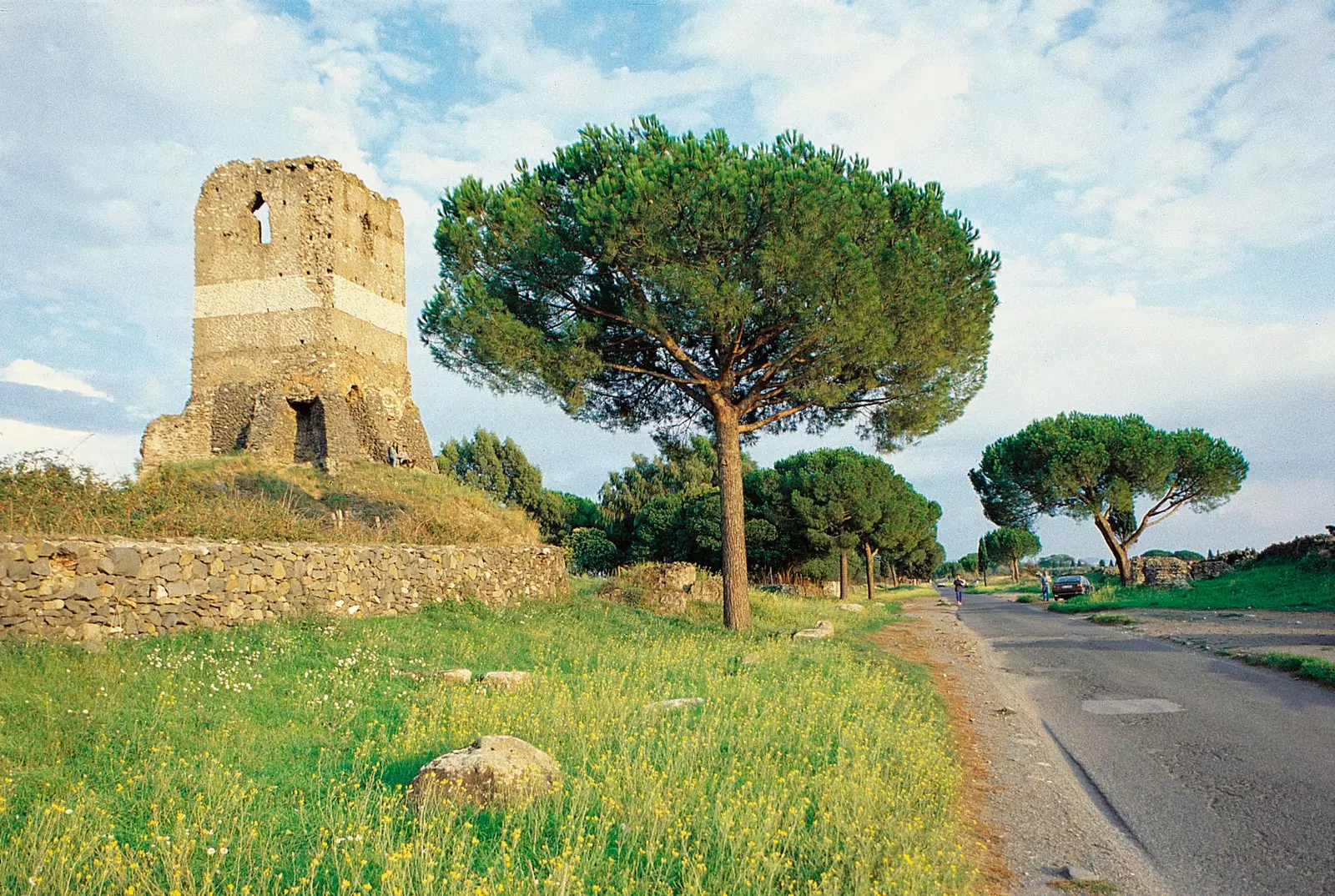
Park of the Caffarella (Rome).
So far our journey through the most secret and authentic Rome. Of course, in addition to these five, there are many other unknown places that are waiting for you to discover them, you just have to go for a walk through this amazing city!
